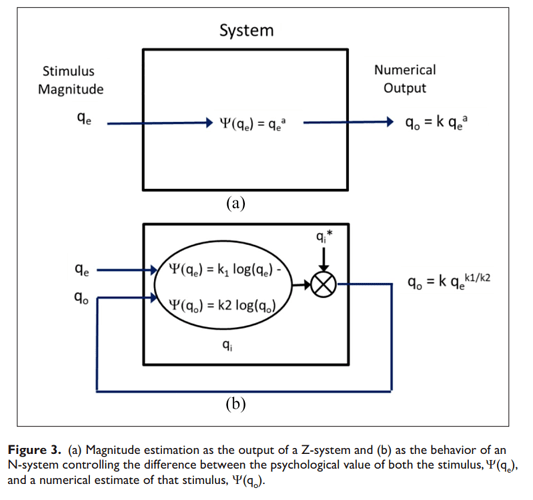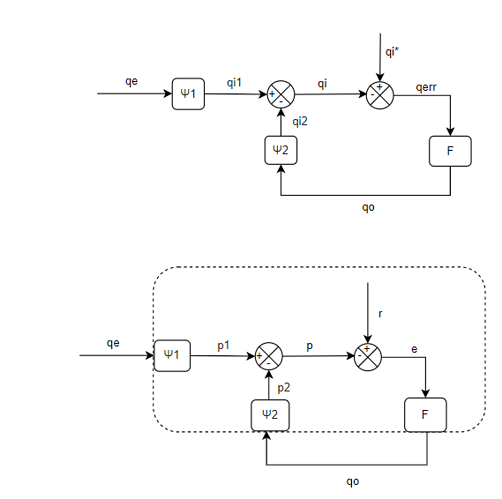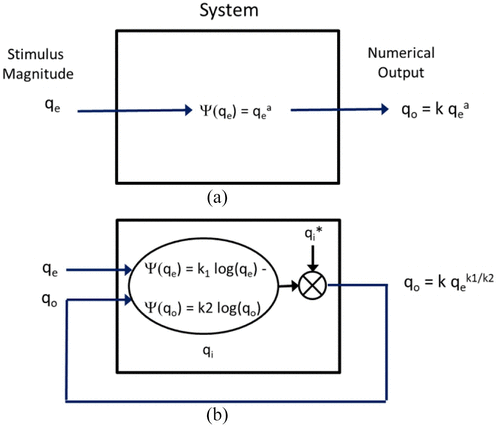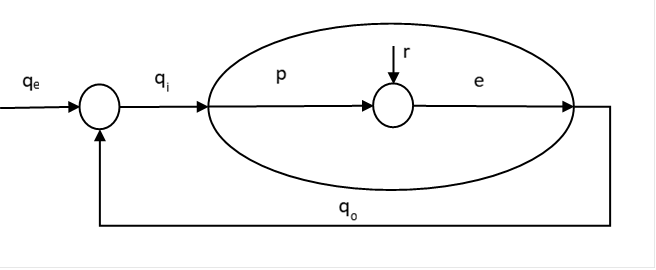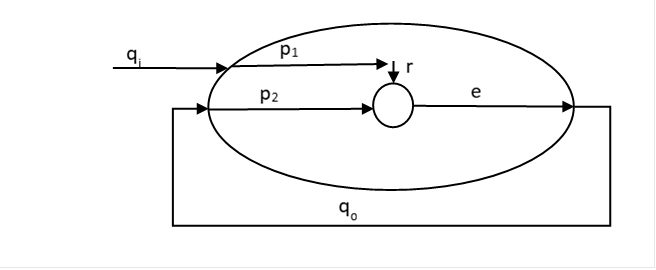Well, I’ve been called a lot of things in this group – bullshitter, persistent mistake maker, clown, etc – but “epistemological idealist” is just going too far ![]()
I actually do think there is a real, physical environment on the other side of our senses. But I agree that my way of talking about perception may have made it difficult to see that that is the case. So I’ll try to explain my point of view – which, I’m pretty sure is the PCT point of view – using your nice diagram.
This diagram is actually a pretty good description of my point of view. Inside the open circle in the environment that represents the controlled variable is where the world of physical variables would reside; these are the environmental variables on which the perception of the controlled variable is based.
In the tracking task, these physical variables would be the spatial distribution of light emitted from the computer screen. In Powers’ (1973) Science paper those variables are labeled as v’s:
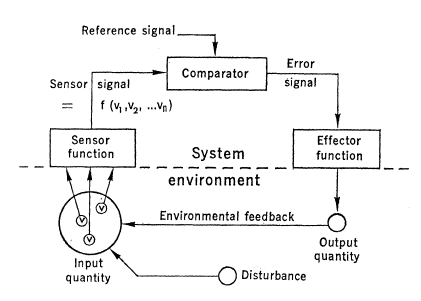
In this diagram, the “Input quantity” is equivalent to what we have been calling controlled variable, q.i (the q we use for labeling variables is a legacy of Bill’s use of “quantity” to refer to variables in the environment).
Because the other relevant environmental variables in the diagram – output and disturbance – are labeled q.o and q.d (which is qe in your diagram), it’s natural to think of q.i (the “Input quantity” circle in the diagram above) as also being a variable in the environment. But it is not! This can be seen from the arrows leading from the physical variables inside the Input quantity circle, the v’s, to the Sensor function (now called the Input function). The Sensor signal coming out of the Sensor function is what we now call the perceptual signal and the diagram shows that this signal is constructed by the Sensor function, f, from the sensory effects of the physical variables, v1, v2,…vn:
So the circle around the v’s in Bill’s diagram represents the perceptual variable that is constructed by the Sensory (Input) function, f (x1,x2…xn). It is called an Input quantity (now contorlled variable) and it is show in the environment but it is not something that exists as an entity in the environment.
Rather, it is a function of physical variables, v1, v2…vn, in the environment. And this function – a perceptual function – is carried out by the control system; and it can also be carried out by an observer of the control system who possesses (or can construct) a Sensory function equivalent to the one used by the control system.
So with only slight modification of your diagram – adding v’s inside the circle that appears in the environment and replacing the question marks with arrows running from the v’s in the circle to the Input functions of the controller and observer – you will have a correct representation of my view of the relationship between people (controllers and the observers thereof) and the environment.
Actually, that problem doesn’t exists because q.i (the controlled variable or Input variable in the diagrams) is actually a perceptual function of the sensory effects of variables in the physical world --the v’s in Bill’s diagram – the same physical world that is the basis of the perception of both controller and observer. Of course, observers (PCT researchers) have to take into account the fact that they are typically perceiving that world from a different perspective than the controllers they observe. But this is usually pretty easy to figure out.
I think what may be the reason you suspect me of being an epistemological idealist is that I rarely describe controlled variables in terms of the physical variables of which they are a function. I think once we get above the level of what Bill called “intensity” and “sensation” type perceptions it just becomes too tedious to do that. So we talk about “target lines” and “cursor lines” (rather than rows of low illumination levels) as being the basis of a perception of distance. Of course, the target and cursor lines are themselves perceptions.
I hope this makes the PCT epistemology a bit clearer but, if not, I hope it at least shows that, while I may be many things, I am not an epistemological idealist.
Best regards, Rick
